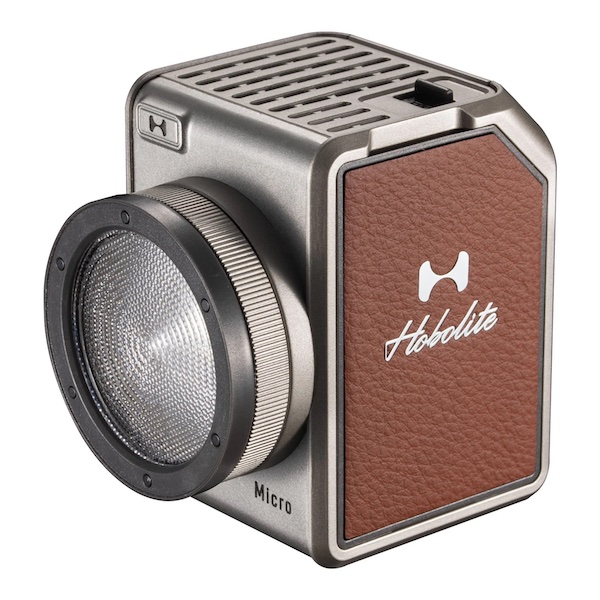Lighting
The recently released Honey Badger 320W/s from Interfit is a compact and affordable AC-powered flash that’s great for those just starting out as well as photographers who want a lighting system to take on location, while leaving the larger, heavier (and more expensive) gear in the studio.
Available in single and kit versions, the $300 option includes a single light, pop-up 24-inch softbox as well as power and sync cables. For a little more than double the price ($700), Interfit’s Honey Badger kit bundles two flash heads, two lightstands, two pop-up 24-inch softboxes, an Interfit Manual Remote and a carry bag. Both options include diffusers, built-in receivers and are equipped with a Bowens mount as well. (Tests performed with the two-light kit.)
DESIGN
Each light measures a compact 5 x 5 x 6 inches and weighs only 3 pounds. Although small and lightweight, they are still well-built (especially considering the price) and feature easy to use controls on the back of the light, including options such as test, power adjustment, modeling lamp, channels and groups. The LCD screen is bright and provides a clear view of settings.
Both the flash and the Honey Badger’s 60W LED modeling lamp are daylight balanced. Interfit claims that the modeling lamp outputs the same brightness as a 300W tungsten lamp, so it can be used as continuous lighting without a color correction gel. I found that the modeling lamp wasn’t quite powerful enough to be used as continuous lighting for some of my test shots, though it did work well in combination with the flash. There’s a proportional option that adjusts the strength of the modeling lamp in tandem with flash power adjustments—helpful when analyzing lighting ratios between multiple lights.
The flash tube is covered with a frosted glass dome diffuser and is surrounded by a Bowens S-type mount and a ring that accommodates the bundled pop-up 24-inch softbox. The latter is very convenient since it folds down into a small, soft bag, does not require rods and is attached by fitting it over the Honey Badger’s built-in ring mount. The modifier is well built but has so much spring to it that when I took it out of its bag, it jumped out of my hands (so be sure to keep it away from your face when removing it from the bag).
Unfortunately, attaching the four corners of the softbox to the ring is no easy task. It’s a very tight fit and requires some strength to attach the softbox; once it’s positioned over the ring, the modifier is solidly attached. Dual diffusers (inner and outer) are easily attached and detached. and an umbrella mount is built in.
The bundled 7-foot, 6-inch lightstands are relatively lightweight but more than sturdy enough to support the lightweight Honey Badger and the softbox.
An Interfit manual remote control is also included with the two-light kit and unlike the TTL version, which is only available for specific camera models (Canon, Nikon or Sony), this remote is universal and works seamlessly with any camera that has a hotshoe. You can use other Interfit S1 remotes with the Honey Badger (and vice versa), but the manual remote is best matched with the latter. Powered by two AAA batteries, the remote has a 3.5mm sync jack and a wireless range of 100m. You can adjust power, control up to eight groups and choose from 15 different channels. The remote also provides access to the modeling lamp. Operation of the remote is intuitive, so there’s no real learning curve.
IMAGE QUALITY AND PERFORMANCE
The Honey Badger has a seven-stop power range from 10 (full power) to 4, adjustable in 1/10th stop intervals, which is more than sufficient range especially when working in a small space like my home studio. Whether used in two- or one-light setups, the Honey Badger produces nice, even lighting. I generally used both diffusers, which resulted in lovely, soft light that’s great for portraits.
I found that although the modeling lamp is daylight balanced, it looked a little cooler than the flash output. But that could just be my perception—it’s hard to say.
Although sync speed is 1/250th sec (no high speed sync for this price, of course), the light recycles quickly—as fast as 1 second at full power. I set the Nikon D500 to continuous shooting to see what would happen at low power and managed to get a few consecutive shots with the Honey Badger before it needed to recycle.
WHAT WE LIKED
The two-light kit that I tested provided the best value. The kit has everything you need and can be transported in the bundled carrying case.
The Honey Badger produces even illumination and has the basic features and functions that you need, whether you’re shooting portraits, a wedding setup or editorial. The seven-stop power range in 1/10th increments is useful and the manual remote works well and is compatible with any camera.
WHAT WE DIDN’T LIKE
There’s not much to dislike about the Honey Badger, especially given its price point. My biggest gripe is with the pop-up softbox and the powerful spring it has when being released from its storage case. It’s also a little difficult to attach it to the Honey Badger’s outer ring.
HOW IT COMPARES
The Honey Badger, as some suspect, is pretty much identical in specs to the Paul C. Buff AlienBees DigiBee DB800, but the Honey Badger offers more flexibility and value for the dollar. The DigiBee costs more for less ($350 for a single flash without a softbox) and is more limited in terms of modifier mount and remotes as compared to the Honey Badger.
BOTTOM LINE
Given its great bang for the buck, the Honey Badger is perfect for those just starting out and on a budget. A more seasoned professional may want to pick up a Honey Badger kit, too, if only to have a
set of lighting equipment to take on location without ever having to worry about any damages or ruining expensive studio lighting gear.
Theano Nikitas has been covering the photography industry for over 20 years.








